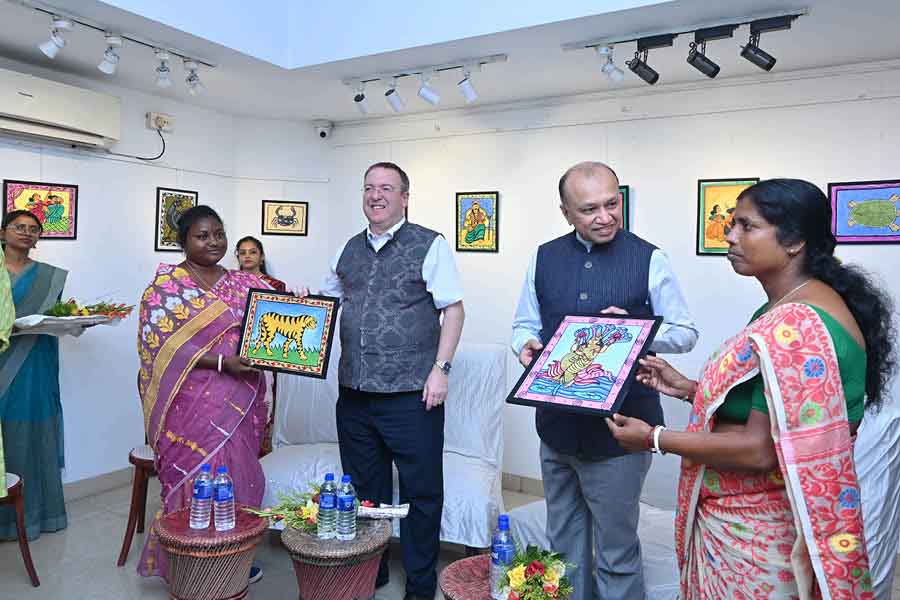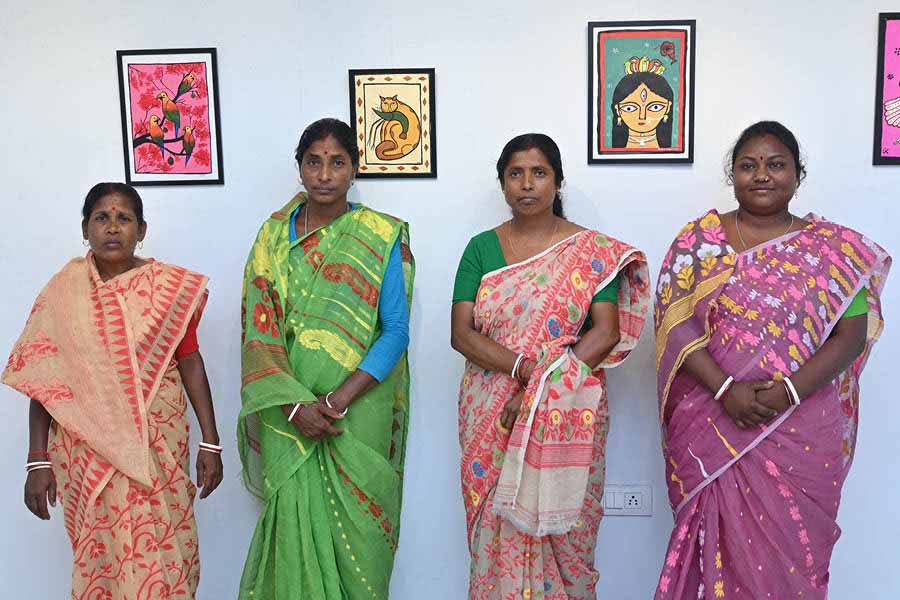Introduction
Patachitra, the traditional art form of Bengal, once flourished in the Sunderbans but had dwindled over the years. However, a recent collaboration between the Kolkata Society for Cultural Heritage (KSCH) and the directorate of forest, South 24-Parganas division, has breathed new life into this rich cultural heritage. An exhibition titled ChitroPot showcased the transformative craft of women from the region, highlighting their journey of revival and empowerment.
Training and Transformation
Over the span of six months, KSCH trained 40 artists from Jharkhali village in the art of Patachitra. The result was 50 stunning paintings and two long scrolls, representing a resurgence of creativity in the region. Women like Devika Barman and Anjali Mandal, once limited to fishing as their only livelihood, found a new lease on life through this initiative.

Expression through Art
The paintings created by these women became a means of expression, depicting daily life in the Sunderbans and themes from Indian mythology traditionally associated with Patachitra. The exhibition not only showcased their artistic talent but also provided insight into the simplicity and challenges of life in the region.
Seeds of Collaboration
The collaboration between KSCH and the forest directorate began two years ago, with a shared goal of preserving the Patachitra culture in the Sunderbans. Through research and training, the organisations aimed to revive this dying art form and economically empower the women of the region.
Empowerment and Economic Independence
By training women in Patachitra, KSCH sought to provide them with economic independence through their artistic skills. Arpita Mukherjee, president of KSCH, emphasized the goal of empowering these women and transforming their lives through art.
Recognition and Support
The ChitroPot exhibition received recognition and support from various quarters, including the British deputy high commissioner to Kolkata and officials from the forest department. They acknowledged the significance of this initiative in providing financial freedom to women and improving their overall well-being.
Health and Economic Benefits
The campaign to revive Patachitra art also carries health and economic benefits for women in the Sunderbans. By engaging them in artistic activities, it reduces their dependence on physically demanding tasks like fishing and improves their overall health and well-being.
Future Prospects
The success of the ChitroPot exhibition marks the beginning of a new chapter for women in the Sunderbans. With Patachitra designs being adaptable to various materials, including paper, cloth, and clay, the potential for economic opportunities for these women is vast and promising.
Conclusion
The revival of Patachitra art in the Sunderbans symbolises not only a resurgence of cultural heritage but also a story of empowerment and economic independence for women. Through collaboration and support, initiatives like ChitroPot pave the way for sustainable development and the revival of lost art forms in marginalised communities.
Feature Image: (From left) Niyoti Mandal, Anjali Mandal, Durga Mandal and Devika Barman were there from Jharkhali to present their work | Courtesy: The Telegraph





